- Home
- Brian Garfield
Target Manhattan Page 5
Target Manhattan Read online
Page 5
Obviously that had something to do with his choice of an antique propeller-driven bomber for this attack on New York. Is there anything in his background up to this point which suggests his later derangement?
Well, he was always an odd bird, that’s obvious from the word “go.” But he wasn’t a violent man. I mean his military service record is remarkable for the opposite reason. There were no black marks at all. No escapades. His formal efficiency reports praised his efficiency and initiative, but there isn’t a damn thing in them that could give you any clue to his character at all.
Perhaps the fact that he was such an unusually colorless person is a clue in itself. People who bottle things up too tightly sometimes tend to explode.
Well, one thing you learn when you make a study of criminal psychology is that there are certain kinds of cases that are easy to predict and certain kinds that are damn well impossible to predict. I mean, you take a standard case of a kid who grows up in urban poverty, in an atmosphere of drugs and street violence and maybe a family with no father and all the usual ghetto aspects that the ivory-tower types call you a bigot for mentioning. You take a case like that and you know it’s advisable to keep an eye on somebody from that background because the chances are he’s more likely to turn to crime than a well-educated kid from a solid home in some small town in New England. But, hell, you can’t take a background like Craycroft’s and make predictions from that. A lot of people with similar backgrounds are airline pilots or vice-presidents of aircraft companies or bank presidents.
Nothing at all in his attitudes or behavior at that time suggested he might go off the deep end?
We’ve all got our private demons, I guess. We’ve all got pressures. But Craycroft’s didn’t show. Not according to anybody I’ve talked to.… Well, I’ll go on, all right?
(Reading) “The middle and late nineteen fifties were a period of big-budget Hollywood dedication to the Second World War. Ryterband and Craycroft worked initially as maintenance mechanics and gadget designers for planes which mounted aerial cameras, but soon Craycroft saw opportunity in the movies’ great interest in airplanes as subject matter rather than as flying camera platforms. In nineteen fifty-four Craycroft and Ryterband formed the only corporation of their checkered career that enjoyed financial success. It was given the name of Air Corps Associates, Incorporated, a company chartered in the state of Arizona for the purpose of ‘aircraft restoration and reconstruction.’
“Air Corps Associates had an interesting premise, and Craycroft was the ideal man to run it. The purpose for which the company had been organized was the restoration of World War Two airplanes for use in war movies. By nineteen fifty-five the U.S. Air Force had a combat flight line of jet aircraft; the designs of the war had been phased out and the surviving airplanes had been put in mothballs. Tens of thousands of aircraft stood parked in rows on a reservation in the desert of northwestern Arizona near the town of Kingman. For a time in the late nineteen forties the Air Force had made some pretense of keeping these planes in repair, as a reserve fleet; but the changeover to jets had rendered the old planes obsolete. The result was that the huge collection of warplanes had rusted, corroded, been pitted by desert sandstorms, ruined in all their ‘soft’ parts (rubber, canvas, wiring, tires), and generally rendered totally unserviceable. Desert packrats and rattlesnakes made nests in the cockpits. Seats rotted away. Glass windows and windshields were shattered by violent desert hailstorms; afterward rainwater seeped into the instrument panels and engine cowlings. By nineteen fifty-five the mothball fleet had been sitting on its flat tires for a full decade, and it was the rare plane that could be restored to airworthy condition with anything less than a complete rebuilding job from nose-hub to tailfin.
“In nineteen fifty-four the reserve fleet was designated ‘war surplus’ and the way was opened for civilian purchase of the planes. The initial purpose of this action, spurred by a Congressional economy drive, was to recoup some of the country’s enormous war-construction debt. But it soon became apparent that nobody had much interest in paying good money for rusted shells. (In many cases the engines had been removed from the airplanes for use in parts-replacement programs for training planes, and even for use in motorboats.) Tens of thousands of once-proud airplanes went begging for buyers.
“For once in their lives, Craycroft and Ryterband were the right men in the right place at the right time. They went to the Air Force with an offer of fractions of a penny on the dollar. It had cost two hundred and fifty thousand dollars to build a B-17 Flying Fortress; Air Corps Associates managed to buy these aircraft from the mothball fleet for prices ranging from ten thousand dollars down to seven hundred and fifty dollars, depending on condition.
“But that would have done no good without Craycroft’s genius for mechanical repair, redesign, and restoration. Other potential buyers—representatives of foreign governments, scouts for feeder airlines, hobbyists interested in air-racing—had looked over the bargain-basement airplanes at Kingman and had passed them up. To them it had appeared insurmountably expensive to get any of the corroded hulks back into flying trim. To Craycroft and Ryterband, evidently, the same challenge acted as a spur to their ingenuity.
“The result was that by nineteen fifty-six Air Corps Associates had equipped itself with an air force of considerable proportions. Starting from scratch in nineteen fifty-four with a capital investment of forty thousand dollars (most of the money put up by motion-picture producers), Craycroft and Ryterband had pyramided their operation within two years to a sixty-three-plane Luftwaffe; and of that inventory, according to company records dated twelve September nineteen fifty-six, fully forty-eight airplanes were in flying condition—including a full squadron of P-40 Warhawks and a ‘flight’ (six planes) of B-17 Flying Fortresses.
“Most war films used actual newsreel combat footage in their aerial sequences. But movies like Twelve o’Clock High and its many successors required substantial ground fleets of actual airplanes for use as backdrops in scenes set on the runway flight lines. A cliché in films of the period was the scene in which the wing commander stands at the railing of the control tower, counting the number of bombers returning from the day’s raid on Berlin or Schweinfurt or the Channel ports. These scenes could not be reconstructed out of wartime news footage; they had to be filmed on the spot, with real airplanes which actually flew. It was Air Corps Associates which provided these warplanes.
“Craycroft restored (and test-flew) the B-29s that bombed Hiroshima and Nagasaki; he gave us—in several films—the Japanese air fleet that bombed Pearl Harbor (most of these being U. S. Navy surplus planes mocked up to resemble the silhouettes of Zeros); he made possible the movie scenes in which John Wayne and Robert Ryan fought the Japanese in the Pacific, in which countless Hollywood stars bombed Germany, and in which other stars fought dogfights with the Luftwaffe, the Italian Air Force and the Imperial Japanese Air Fleet.
“By the early nineteen sixties it was routine for Craycroft and Ryterband to accept a special rush order for a squadron of B-24 Liberators to be painted up with the markings of a specific World War Two unit (real or fictitious), and to actually fly the planes across the Atlantic and deliver them to the moviemakers’ locations in England or Spain.
“In his early forties Craycroft was a success. On paper he was a millionaire. But his wealth consisted entirely of stock certificates in Air Corps Associates. His standard of living was meager. He had never married; he lived in a modest apartment in Sherman Oaks, hardly a ten-minute drive from the company’s immense hangar-field in Burbank. His personal car was a war-surplus Jeep, made by Ford in nineteen forty-two; he had paid eighty-five dollars for it at an Army auction and had rebuilt it himself. He owned two business suits and, it is said, one necktie. His fingernails were invariably black with petroleum grease and grime. When not on purchasing expeditions to Kingman or ferry-delivery flights to film locations, he appears to have spent seven days a week working in the hangars of the Burbank facility. All evide
nce indicates he had little interest in money for its own sake; his work was his life. He neither swam nor played golf nor drank more than one or two drinks a week. He had no known romantic relationships, either heterosexual or homosexual. His social activities were minimal, confined to occasional dinners with his sister and brother-in-law and the unavoidable business lunches and dinners, the number of which he kept to an absolute minimum. He is not known to have had any close friends other than Charles Ryterband. He had not been in touch with his eldest sister, who still lived in Ohio, since the late nineteen forties.
“Interviewed recently by the FBI, an aircraft mechanic who was employed by Craycroft at Air Corps Associates during the period between nineteen fifty-five and nineteen fifty-eight had this to say:
“‘I guess most of us guys who devote our lives to airplanes are a little screwy. But most of us aren’t that screwy. I mean, I was married then, I had the first kid and the other one on the way, I had a bowling league, and we’d go to Disneyland or down to the beach on the weekends. We had plenty of friends, God knows. I mean we’re normal, you know? But Harold, he was something else. I mean, for openers nobody ever called him Hank or Hal or Old Buddy. He didn’t like “Mr. Craycroft” at all, even if he did own the whole shebang. But he’d only answer to “Harold.” No nickname. Now everybody in the airplane racket has a nickname. My name’s Joseph but half the guys I work with don’t know that; I’m Shorty, that’s all, on account of I’m so tall. Old Mr. Ryterband, we all called him Charlie.
“‘You know what it was about Harold? I’ll tell you how he always struck me. He never looked his age, you know. I guess he must have been around forty when I worked for him but he could have been twenty-eight, thirty. He was always kind of gangly and he had that shock of dark hair that he was always shoving back out of his face. He’d got kind of farsighted, I guess, and he had to wear glasses to do close-up work or reading. He had these great big black-frame eyeglasses that kept slipping down his nose. You’d see him working on an engine torn apart on the bench, and he’d be pushing his hair back, pushing his glasses up on his nose, and biting his lower lip—his teeth were a little buck. Actually he wasn’t bad-looking at all. He got mistaken for Gregory Peck a couple of times, only his jaw was a little small and he had those big upper teeth. But he always struck me like one of those introverted kids you always knew in high school—the ones that never had the nerve to date girls, they were always wrapped up in their toy chemistry sets and their microscope slides and their butterfly collections. You know what I mean? He wasn’t queer or anything. He was just sort of a teenage kid that never outgrew the stage of being fascinated with brainy toys. I bet you when he was fourteen he had an Erector Set.’
“Craycroft hadn’t had an Erector Set at fourteen, of course; by the time he was fourteen he’d dropped out of school and was learning to fly. But the characterization seems apt—as accurate as anything the detectives have been able to learn about Craycroft up to this time. He had a single-minded and virtually adolescent devotion to the mechanics of flight and the romance of aviation.
“This, mainly, is why it has been difficult to ‘get a handle’ on Craycroft’s psychology. It has been impossible to interview his friends because he had no friends in the usual sense. Employees, business associates, and fellow airmen have been interviewed but their answers have been limited to the sphere in which they knew Craycroft: the professional sphere. He lived for his work, and apart from it he seems to have had no life at all. Nothing about him, really, has been added to what was written in his early Army file reports. He was a mechanical genius, dedicated and devoted to the one passion of his life—the airplane.”
But evidently he’d made himself very successful. He was doing what he enjoyed doing, and making a great deal of money from it. How does that jibe with the obvious sudden desperation that led him to this incredible crime?
Well, it wasn’t all that sudden. And the success didn’t last you know.
(Reading) “By the early nineteen sixties the Hollywood fashion for war movies was waning. Apparently it was Ryterband who first saw the signs of change. Shrewdly Ryterband began to put subtle pressures on his brother-in-law to diversify the operations of the company. In time—by about nineteen sixty-three—Craycroft had been brought around to Ryterband’s way of thinking. By then ACA had a force of two hundred and forty-five planes, nearly all of them airworthy—and most of them, ironically, stored in mothballs because the movie market was drying up; nobody was making World War Two films anymore.
“It was Ryterband’s inspiration to go into the used-airplane business. Ryterband was by no means a marketing genius, but he had the intelligence to persuade Craycroft to hire a small staff of sales personnel, four former Air Force fliers who had flown both in the U.S. forces and in mercenary forces overseas, and who had a large number of business and foreign contacts among them.
“There had never been much of a business in surplus bombers. Progress in aircraft design had rendered them obsolete as military planes. And for civilian use—as cargo planes or passenger transports—they were ill-designed; they had not been built for comfort, economy, or spaciousness. The B-17 bomber, for example, was a huge airplane for its day: a wingspan of more than one hundred feet, standing nearly twenty feet high, weighing eighteen tons empty, capable of carrying another fourteen tons of fuel and cargo at a maximum speed well in excess of three hundred miles per hour (cruising speed two hundred and twenty-five) to a service ceiling of thirty-five thousand feet. It had a range, with three tons of bombs aboard, of two thousand miles.
“But the fuselage was narrow—too narrow to insert more than two rows of passenger seats abreast, and the diameter shrank rapidly toward the tail so that nearly half the length of the plane was unusable for passenger accommodation. At intervals the fuselage was interrupted by bubble canopies designed to house machine-gun turrets. There was no provision for cockpit pressurization or heating; combat fliers had worn electrically heated flying suits against the high-altitude outside temperatures of below forty degrees Fahrenheit, and crews had been forced to wear oxygen masks above ten thousand feet.
“And the in-flight economy of these planes was very poor. They were designed for power, not fuel conservation. The four Wright Cyclone engines developed a peak horsepower of nearly five thousand horsepower—a combined power plant which made for superb climbing ability and maneuverability, and meant that a shot-up bomber could still fly even if two engines had been destroyed. But in terms of ordinary cargo or passenger economy the B-17 was absurdly overpowered—much like a five-hundred-horsepower Detroit car: fine for the profligate owner, but useless as a taxicab.
“These factors had made it impossible for anyone to make a successful business out of converting old bombers to useful civilian aircraft. But that was before Charles Ryterband persuaded his brother-in-law to try it.
“By the end of nineteen sixty-three Craycroft had blueprinted two complete redesigns—for the B-17 and the B-24—which for the first time showed how these models could be rebuilt for passenger and air-cargo use.
“Two prototypes were completed and flown in July, nineteen sixty-four. Performance and economy figures were analyzed. Craycroft made further adjustments in his designs, and in August the two planes were flown again. Ryterband and Craycroft pronounced them satisfactory, and the four-man sales force was sent out into the world to secure orders.
“Craycroft had achieved nearly the impossible. By the astute use of new lightweight metal alloys (very expensive but used sparingly) and the almost total redesign of the Wright engines, using the original engine blocks and essential parts, Craycroft had devised inexpensive ways to reduce the bombers’ fuel-consumption by more than one-half. Performance suffered to a remarkably small degree. The service ceiling was cut from thirty-five thousand feet to twenty-four thousand but for normal commercial purposes that was still ample. Top speed was reduced by more than forty mph, but cruising speed—the important element—was actually increased: to two hundred a
nd thirty-five mph at ten thousand feet.
“In fact, the most extensive and costly part of the redesign program was neither in the power plants nor in the mechanical components of the airframes. It was in the field of comfort and convenience. By sealing windows, building an interior skin and installing recirculation and heating systems (most of them acquired from parts-dealers specializing in scrap components from obsolete ruined civilian planes), Craycroft succeeded in building modern heating and pressurization systems into these airplanes which had never been designed for them. This was the crucial item in the design, because it meant the planes now could be used to carry passengers or live-animal cargo in comfort.
“In many cases the original instrument systems had to be updated to meet the requirements of international and domestic regulations. Radio-navigation devices had to be incorporated, to supplant or replace the original gyrocompass and magnetic gauges. LORAN and communications systems had to be installed. Even radar was built into some of the later models.
“It was inevitable that the end result would be far more expensive than the restorations in which ACA had specialized before. These new cross-breed aircraft weren’t dirt-cheap. But they were competitive, and that was the important thing. Craycroft’s converted bombers had cargo and passenger capacities which compared with those of the secondhand DC-6s and Constellations, which airlines were selling in order to make way for their new jets. He was able to undersell the airlines by about thirty percent in purchase price—and this made his planes very attractive to charter airlines, small governments, and business concerns which didn’t need jet transports or gigantic machines.
“ACA’s first customers included the government of Morocco, three group-charter airlines in the United States and one in London, and a fruit-plantation company which owned several islands off the coast of eastern South America. The latter concern bought Craycroft’s planes for fast delivery of fresh fruit to Florida and Texas markets; they chose Craycroft’s planes over the competition because their runways on the islands were of limited length and the Craycroft planes required considerably less runway than did standard transports for landing and taking off.

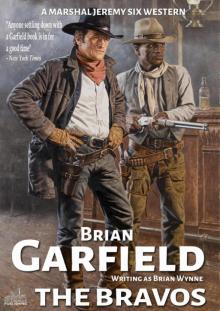 Marshal Jeremy Six #3
Marshal Jeremy Six #3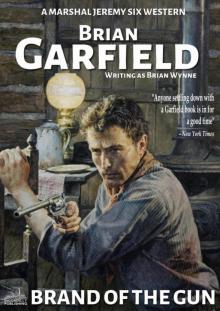 Marshal Jeremy Six #6
Marshal Jeremy Six #6 Marshal Jeremy Six #5
Marshal Jeremy Six #5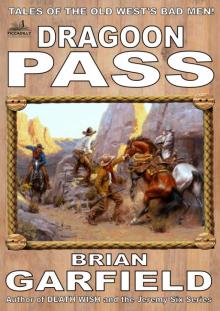 The Outlaws 2
The Outlaws 2 Marshal Jeremy Six #7
Marshal Jeremy Six #7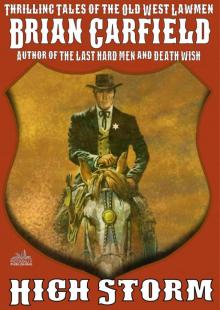 The Lawbringers 4
The Lawbringers 4 Marshal Jeremy Six #4 the Proud Riders
Marshal Jeremy Six #4 the Proud Riders The Romanov succession
The Romanov succession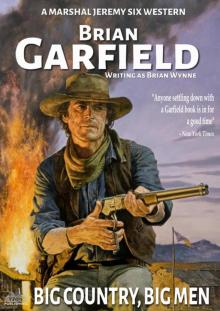 Marshal Jeremy Six #8
Marshal Jeremy Six #8 Sliphammer
Sliphammer Line of Succession
Line of Succession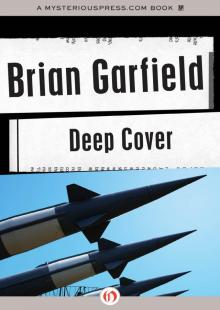 Deep Cover
Deep Cover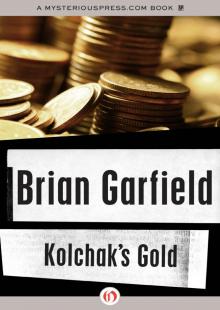 Kolchak's Gold
Kolchak's Gold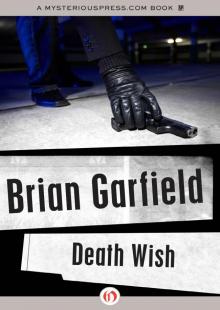 Death Wish
Death Wish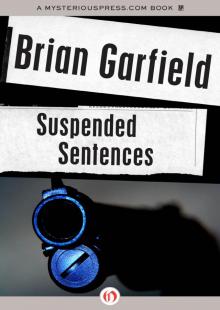 Suspended Sentences
Suspended Sentences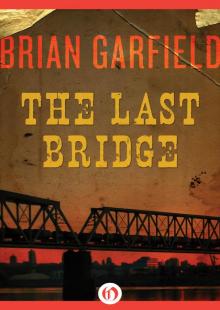 The Last Bridge
The Last Bridge Relentless
Relentless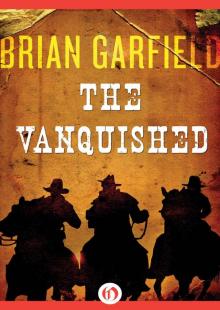 The Vanquished
The Vanquished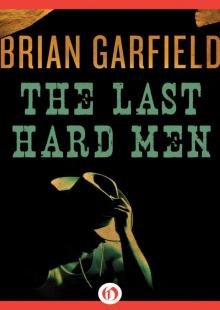 The Last Hard Men
The Last Hard Men Hit and The Marksman
Hit and The Marksman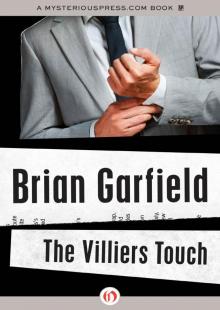 Villiers Touch
Villiers Touch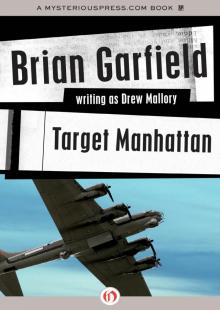 Target Manhattan
Target Manhattan Marchand Woman
Marchand Woman What of Terry Conniston?
What of Terry Conniston?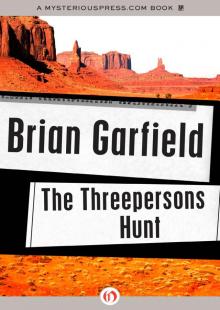 Threepersons Hunt
Threepersons Hunt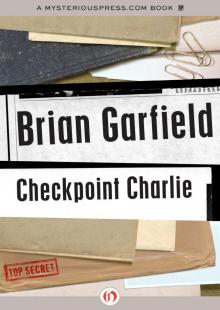 Checkpoint Charlie
Checkpoint Charlie Romanov Succession
Romanov Succession Necessity
Necessity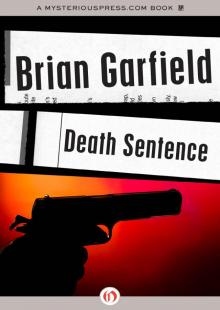 Death Sentence
Death Sentence Fear in a Handful of Dust
Fear in a Handful of Dust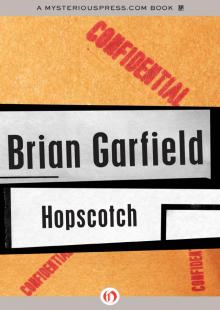 Hopscotch
Hopscotch